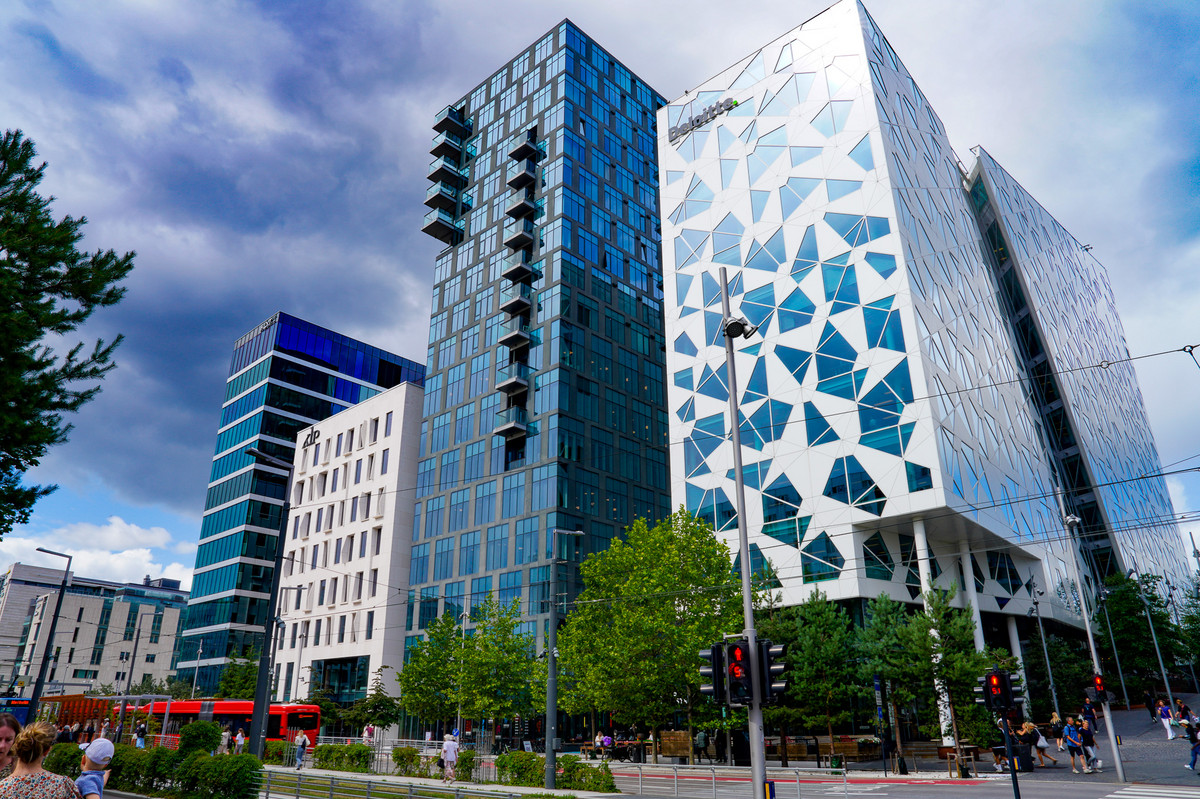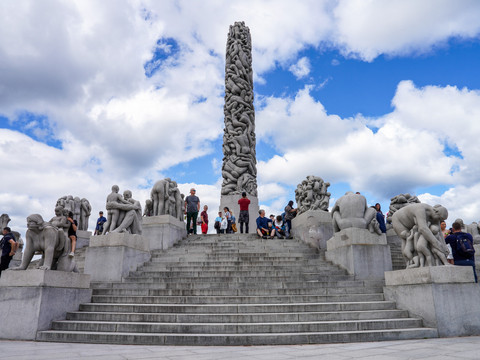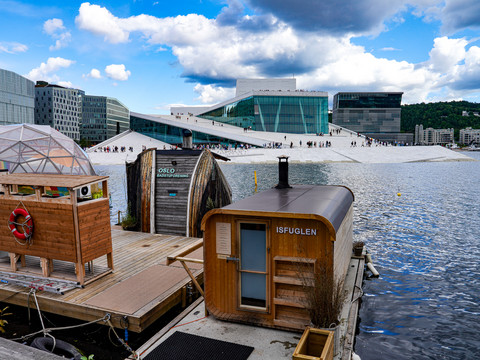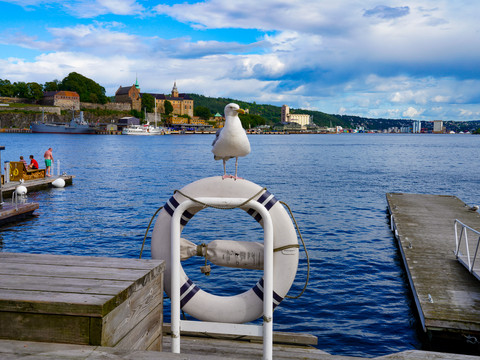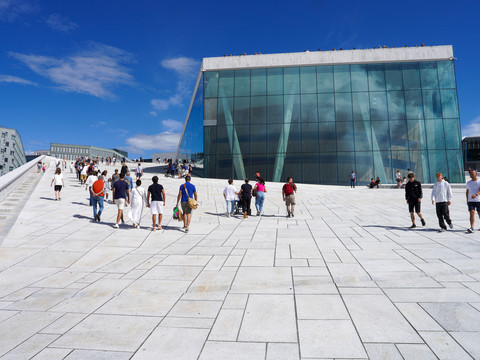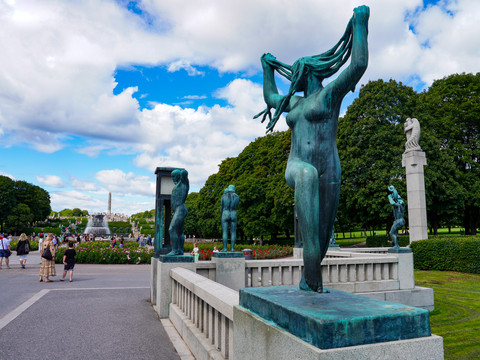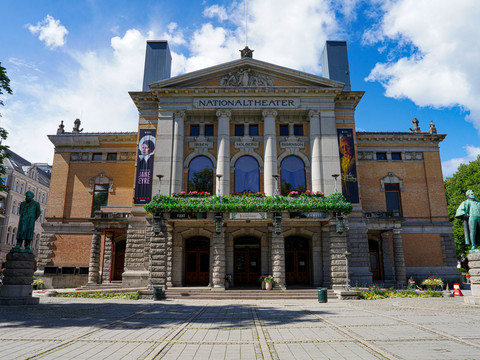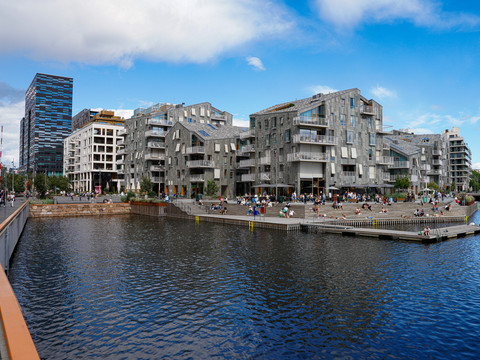Once considered Cinderella among northern metropolises, Oslo has now dressed itself up and set new standards in architecture and transportation planning. The Norwegian capital, surrounded by mountains and the sea, appears compact, rich in culture, and friendly - and it's fun! In addition to its world-class museums and galleries that rival those of all major European art cities, Oslo also shines with abundant nature and offers countless opportunities for hiking, cycling, skiing, and boating. Added to this is a thriving café and bar scene, top-notch restaurants, and a nightlife that offers everything from opera to indie rock. All of this makes Oslo an incredibly smart city that deserves to be discovered.
What attractions come to mind when you think of Oslo? The Holmenkollen ski jump, the expansive Vigeland Park, the striking opera house, the royal palace, or perhaps the new Munch Museum. Oslo has much more to offer. By walking, you can quickly and easily explore Oslo's city center and move from one attraction to the next. Are you ready for a perfect day in Oslo?
Let's start royally. The royal palace, the official residence of the King of Norway, is located at the end of Karl Johan's Gate, was built in 1825, and is open to the public from June to August. Tours last 60 minutes, or you can witness the daily changing of the guard at 1:30 p.m. Then, stroll along Karl Johans Gate, the main shopping street leading from the royal palace to the central station. On this magnificent avenue, named after King Charles III of Norway, there are luxury hotels and quality shops, like pearls on a string. Walk along this car-free artery, passing the National Theater where the bronze sculptures of "culture saints" Ibsen and Bjørnson stand. Across the street, the Hotel Continental shines with its Art Nouveau theater café, while on the other side of the avenue, the majestic columned building of the university adds a classical touch. On the way to the port, you can also visit Oslo Cathedral, the city's main church and seat of the Archbishop of Norway, built in the 12th century and completed in 1697 after several renovations. Feeling a little hungry and a chocolate lover? Then you should visit the Freia shop. Here you will find Norway's best chocolate or you can enjoy freshly baked kanelboller (cinnamon rolls) at one of W.B. Samson's bakery branches. Simply delicious!
Around the harbor basin, the next highlights are already waiting. Foremost among them is the Opera House, a new landmark of the city. It's not only the most spectacular building in Oslo, but also one of the most extraordinary opera houses in the world. The Opera resembles an immense iceberg floating in the fjord, due to the generous use of snow-white marble and numerous glass surfaces. What you don't see: Like an iceberg, 16 meters of the building are hidden beneath the water level. The Opera House was completed in 2008 according to a design by Snøhetta. But the Opera House is not only an art object and a venue, it also features a gigantic viewing platform. You can stroll for free on the rooftop and enjoy the magnificent view over the city and Oslo Fjord.
Right next door is one of Norway's most famous museums. The Munch Museum is dedicated to the life and work of Norwegian artist Edvard Munch and houses a collection of over 28,000 works by Munch, including the famous painting "The Scream" in three versions, of which only one is visible each hour. There are also many interactive rooms, such as Munch's house, which you can walk through.
For those interested in architecture, it's recommended to take a look a few blocks away at the renovated Fjord City, on the former harbor and industrial site. In the Bjørvika district, in addition to offices and residences, there are also cultural offerings, restaurants, and shops for strolling. Part of the neighborhood is also the Barcode District. It consists of twelve skyscrapers of different widths and heights. Designed by various architects, they are equipped with many architectural details. What's special is not the individual buildings, but rather the overall picture. With the empty spaces between the skyscrapers, the skyline from afar resembles a barcode. You also have a great view of this entire work from the Acrobat Bridge, another architectural masterpiece. The innovative steel and glass construction, 206 meters long, won the first prize at the European Steel Bridge Awards in 2012.
If you want to relax after this morning program, follow the locals' example and rent a spot in the sauna overlooking the Opera House and the Munch Museum. Between sessions, you can plunge into the refreshing waters of the fjord. A real highlight in Oslo, beneficial for body and soul. From here, ferries regularly depart for the museum island of Bygdøy. A great choice for museum lovers - even in rainy weather - as you can spend a whole day exploring the art and history of Norway on the island.
Just the boat trip across Oslo Fjord is an experience and a highlight in itself. The Bygdøy museum island is home to some of the city's most important museums. Let's start with the small but very interesting Kon-Tiki Museum, dedicated to the life and work of Norwegian explorer Thor Heyerdahl. Heyerdahl is best known for his Kon-Tiki expedition, during which he sailed on a raft made from traditional materials across the Pacific. The two original ships Kon-Tiki (made of balsa wood) and Ra II (made of papyrus), with which Heyerdahl crossed the Pacific in 1947 and the Atlantic in 1970 respectively, are on display. The Fram Museum is dedicated to the polar ship Fram and its expeditions to the poles and is located just opposite the Kon-Tiki Museum. The Fram is the strongest wooden ship ever built worldwide. The Fram was used in three major polar expeditions: those of Fridtjof Nansen (1893-1896), Otto Sverdrup (1898-1902), and Roald Amundsen (1910-1912). The ship can be visited with its original furnishings and equipment. The Viking Ship Museum, on the other hand, houses three of the best-preserved Viking ships in the world, as well as a collection of many other artifacts from the Viking era. There remains the Norwegian Folk Museum, one of the largest open-air museums in the world. It covers more than 155 hectares and has over 150 buildings to discover, including a stave church and various typical buildings from all regions of Norway. My money-saving tip: the Oslo Pass offers free entry to more than 30 attractions and museums, as well as free use of public transport, including boats to the Bygdøy museum island.
For the return, let's take the ferry to Pipervika Bay. From afar, the view goes up to Akershus Fortress and Oslo City Hall. The City Hall, seat of the municipal administration, was designed by Norwegian architect Arnstein Arneberg and completed in 1950. Two brick towers evoke an industrial atmosphere. Statues outside and murals inside celebrate independence. Nobel Prizes are awarded here every 10th of December. Akershus Fortress, just across, is a popular sunset spot with a view of City Hall and the bustling district of Akers Brygge. The medieval fortress, used as a prison, barracks, and palace, was built in 1299 by King Håkon V of Norway and has been renovated several times since. With over 200,000 visitors per year, it is one of Oslo's most popular tourist attractions.
After such a packed schedule, you deserve a break. The Aker Brygge Waterfront is the perfect place to relax. Find a spot on the promenade and enjoy the evening at one of the many restaurants, clubs, or cafes. Lekter’n is the classic choice for a glass of wine al fresco right by the water. If you're feeling generous, in the ultra-chic new district of Tjuvholmen, filled with galleries, art installations, and cafes, you can enjoy a delicious meal at The Salmon seafood restaurant. You can even take a dip in the water at a nearby man-made beach. The heart of the district is the Astrup Fearnley Museum designed by star architect Renzo Piano, housing contemporary art. The building looks oddly fragile, while the sculpture park surrounding it is spectacularly imposing.
To admire even more sculptures, head to Vigeland Park. The world's largest sculpture park is home to over 200 naturalistic sculptures by Norwegian artist Gustav Vigeland, symbolizing the cycle of life. Admission is free.
And one last tip for all ski fans: like a floating blade, the Holmenkollen ski jump soars skywards. Metro line 1 takes you from the center on an impressive panoramic journey up to the city's balcony. After a short walk and a lift ride, you'll find yourself at the top of the steep ramp, enjoying a postcard-worthy view. Ski jumping at Holmenkollen has been happening since 1892, but as part of the Nordic Ski World Championships in 2011, the original jump was demolished and replaced with a new, ultramodern structure. As a visitor, you can even take a jump, in the simulator at the ski museum set up in the visitor center, tracing the evolution of skiing over the past 4000 years.
To properly prepare for your trip
How you get there:
Nonstop with SWISS or by train to Kiel and then as a mini-cruise with Colorline https://www.colorline.de/kiel-oslo/mini-kreuzfahrt-erleben
Getting around:
On foot and by ferries
How long should I stay:
Weekend - ideally combined with a trip to Norway
Best travel time:
Year-round
Overnight stay tip:
Hotel Amerikalinjen - right by the main train station
Sauna session:
https://koknorge.no/leie-badstue-oslo/
More information:
https://www.visitoslo.com/de/
Realised by Michael Bachmann
Further travel pictures under www.kissed-by-nature.com

